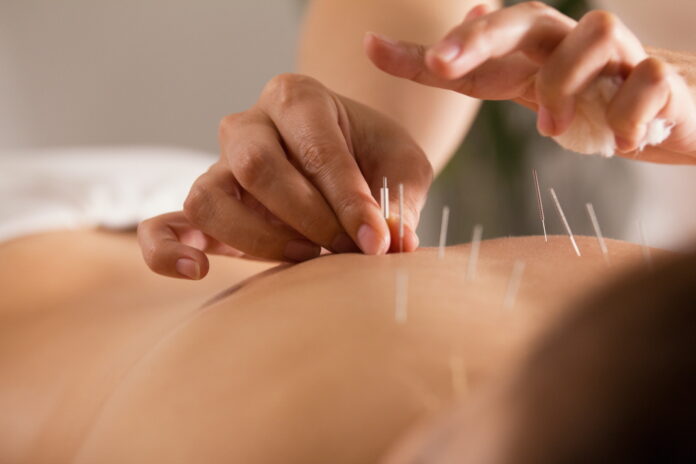
Underlying Theories of Acupuncture Treatment (20)
By Brandon SJ Oh L.Ac.
It is also possible to use alternative acupuncture points on the same meridian, as I explained earlier, that same-named upper and lower meridians share the same meridian energy.
For example, BL1, where the Foot Taiyang Urinary Bladder starts, strengthens vision, but not many acupuncturists use the acupuncture points. Because of its location in between the nose and eyes. The acupuncture points make bruises if an inexperienced acupuncturist tries to insert a needle on them. For this case, BL67, where the UB meridian ends, could replace BL1, according to my theory. Applying the theory makes it a lot easier to apply correlational Acupuncture Points (CAPs). You have to keep in mind that using alternative acupuncture points is first to determine where the emptiness is located and the energy flow of meridians.
▲ Corresponding Acupuncture Points on one meridian and Corresponding Acupuncture Point to Du Mai (Governing Vessel)
There is another possibility of using alternative acupuncture points. Internal pathogenic factors cause symptoms on the head or body. Treating symptoms from an internal pathogenic factor could be taken care of using acupuncture points on the head and the back and acupuncture points located on Du Mai. This could be understood by interrelations of acupuncture points or corresponding acupuncture points on Du Mai for paring one from the head and the other on the back. If a patient complains of pain in one place on the head, find one of the acupuncture points on Du Mai with the same level of pain. Then find the corresponding acupuncture point on the back if you are not sure. Please refer to the table which explains corresponding acupuncture points on the head and the back.
Once you find the corresponding acupuncture point, you need to keep one more in mind as practicing needle insertion. If the pain on the head is located on the left, the needle’s point should left from the Du Mai. If the pain is on the right, the needle’s tip should be pointing to the right from the Du Mai channel.
The same rule will be used for treating back pain. If a patient complains of pain on a location of the back, find the Du Mai point, which is horizontally the same level as the pain location, then look up the chart to find corresponding acupuncture points on the head. The needle should be pointed to the location of the pain.
The technique is mostly used on Du Mai, which shows the most definite relationship between the head and the back.
|
|
Head |
Back |
|
1 |
GV28 |
SP2 |
|
2 |
GV27 |
GV13 |
|
3 |
GV26 |
GV12 |
|
4 |
GV25 |
GV11 |
|
5 |
GV24 |
GV10 |
|
6 |
GV23 |
GV9 |
|
7 |
GV22 |
GV8 |
|
8 |
GV2정 |
GV7 |
|
9 |
GV20 |
GV6 |
|
10 |
GV19 |
GV5 |
|
11 |
GV18 |
GV4 |
|
12 |
GV17 |
GV3 |
|
13 |
GV16 |
GV2 |
|
14 |
GV15 |
GV1 |
▲ Acupuncture points which Corresponding to level and clinical application
Meridian or energy channels on the right and left of the human body are distributed symmetrically. Therefore, acupuncture points located on the same horizontal level should have the same amount of energy. Even two acupuncture points on the same level, but different meridian also have the same amount of energy.
Once the balance of the meridian broke, there will be a deviation in energy movement on one side of the body. If an inflammatory reaction is started on one side, the reaction generates heat sensation and pain on the other side. On the other side of the body, it tries to send energy to where the inflammatory reaction is progressing. For the moment explains how energy deviation starts.
If a symptom is not severe, and healing energy is more vital than the cause of the symptom, the problem could be resolved sooner. But the early stage of the inflammation tends to create a vigorous immune reaction, and healing energy through acupuncture, cupping or wet cupping works temporarily because the symptom is a lot stronger than the healing energy.
This case explains why more pain could occur after treatment is done on the pain area due to sprain/spraint.
Treatment on where a patient feels pain may reduce the amount of pain by scattering pathogen for a time, but it also increases the chance for the patient to encounter more significant pain than having the treatment.
To avoid recurring pain cases after the treatment, stimuli on the other side of the affected area. By inserting the needle on the other side, it regulates the amount of healing energy toward the pain area from rushing. After inserting a needle on the other side, insert needles on where the pain is located. This explains that the same leveled acupuncture points share the same energy.
The procedure for inserting needles is crucial as you apply the theory for actual treatments. The first needle should go to the other side where the patient does not feel pain but on the same horizontal height as the pain location. The first needle attracts energy from the pain area. And the procedure could be explained by the same shapes have the same energy for diminishing pathogen on the other side. After the session ends, needles on pain should be removed first, and then needles on the other side pulled out.




























![Supporting the Elderly [Appendix] 附養老 노인부양](https://theacupuncturetimes.com/wp-content/uploads/2021/06/AdobeStock_Evrymmnt-696x385.jpeg)



